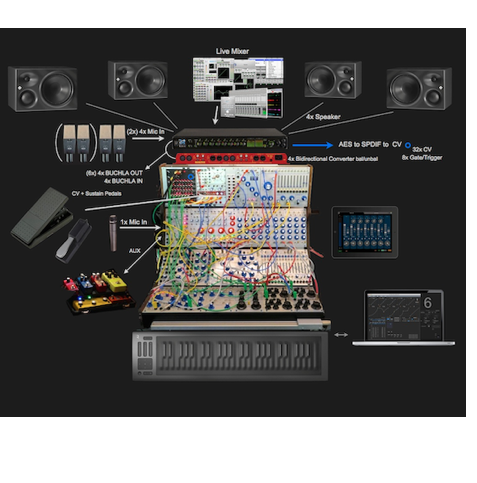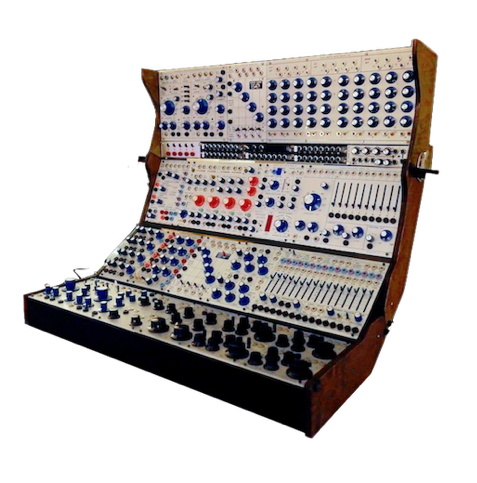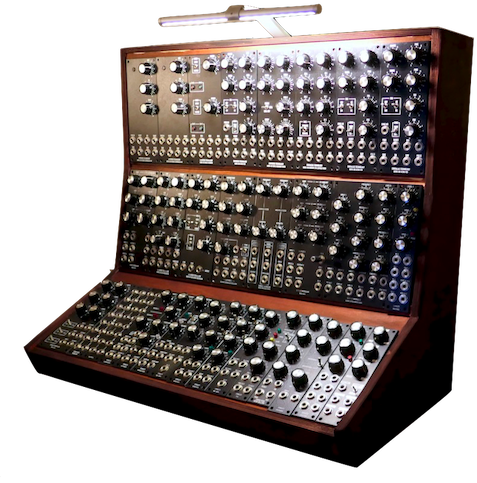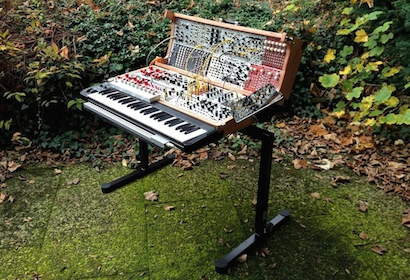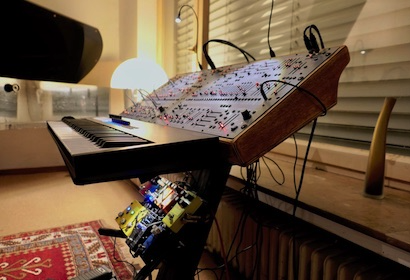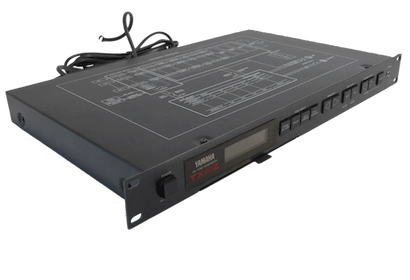Synthesizer
My Electronic Sound Devices - Today and Yesterday
"Stage Synthesizers" of the 70s were at that time by far too expensive - and those, which I could attempt, said nothing to me. It was only the ARP 2600, which I purchased for DM 180 in the early 80s (at that time it was extremely unpopular), that really appealed to me.
I have never played synthesizers as a complement to the piano - they were rather the opposite, a liberating counterweight, in comparison with the piano still without history.
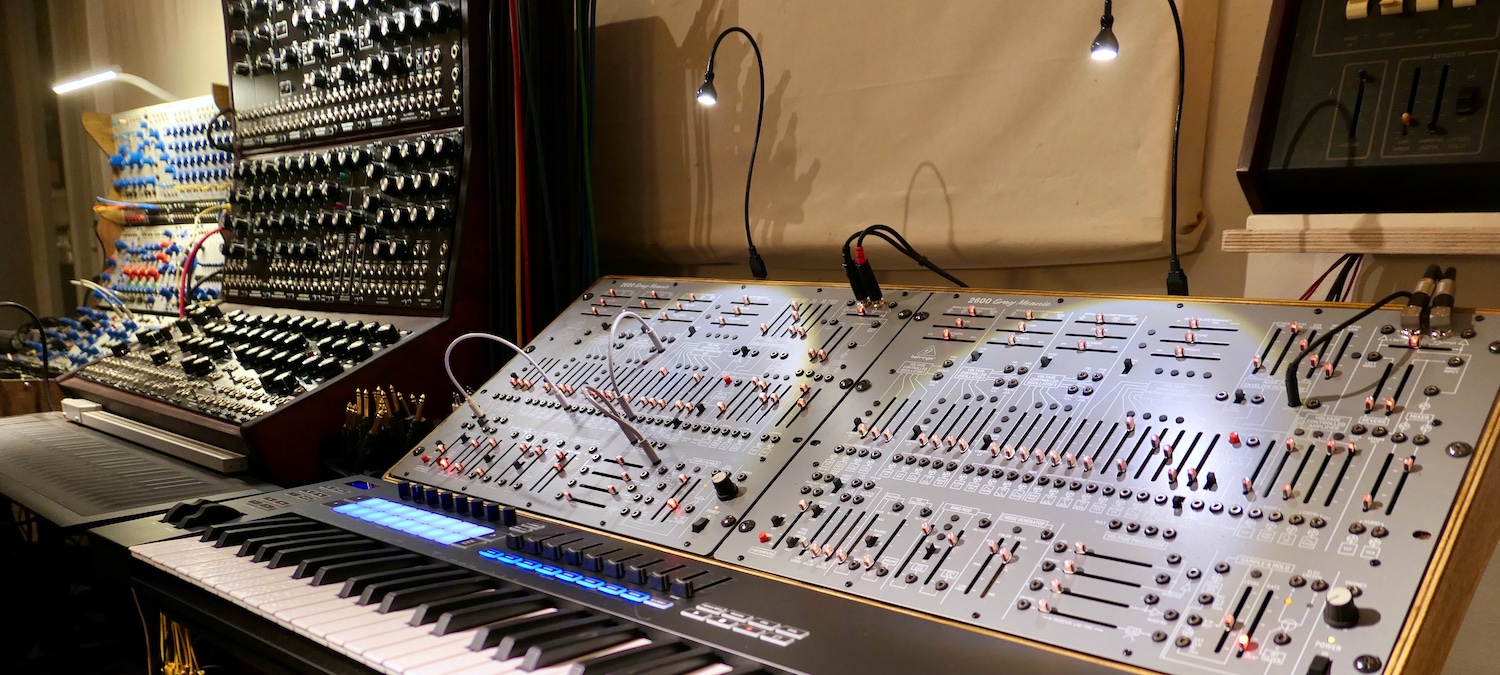
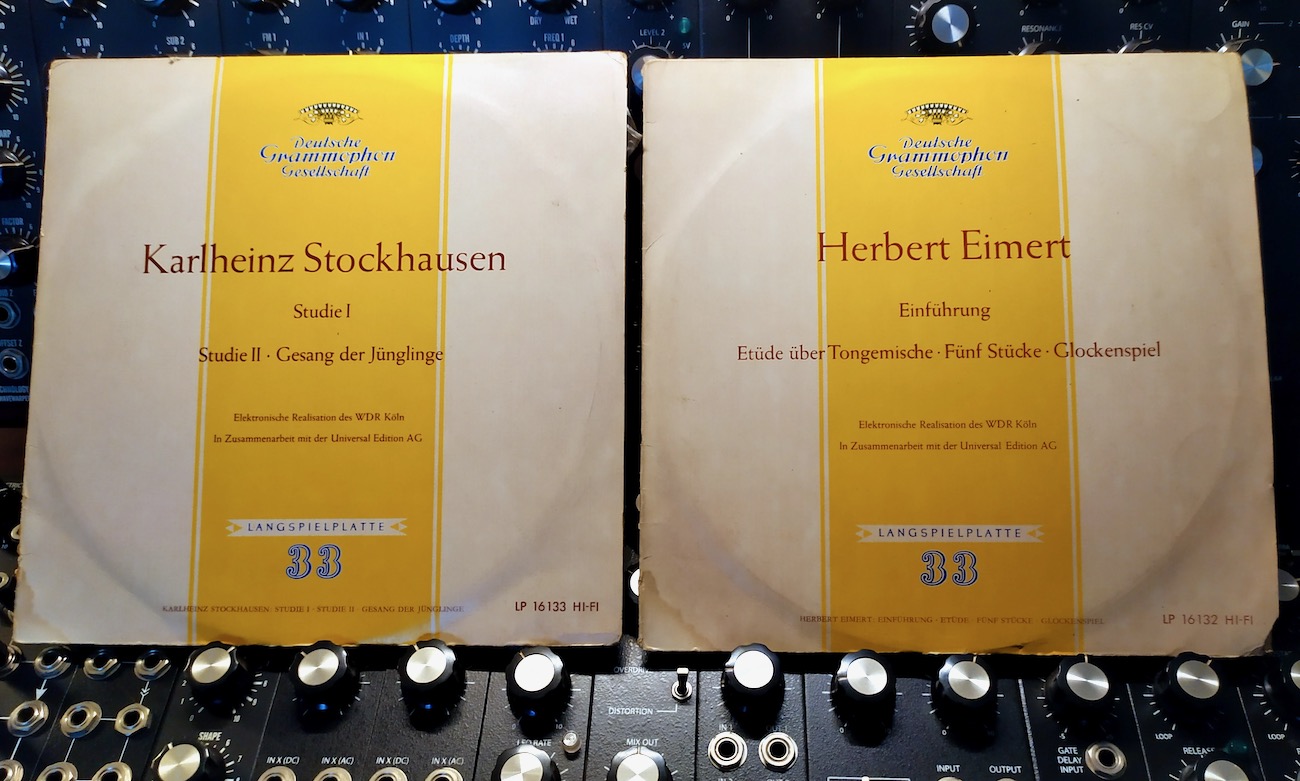
Electronic sounds fascinated me since childhood - although they were still quite rare at that time. In 1964 I had discovered these two 10 inch records (mono) in my father's record shelf, which attracted me extremely.
"Studie I" + II" and "Gesang der Jünglinge" by Karlheinz Stockhausen and "Einführung in die Elektronische Musik" and "Etüde über Tongemische" by Herbert Eimert. Shortly after that "Kontakte" by Stockhausen - until to this day it has remained as one of my favorite pieces!

